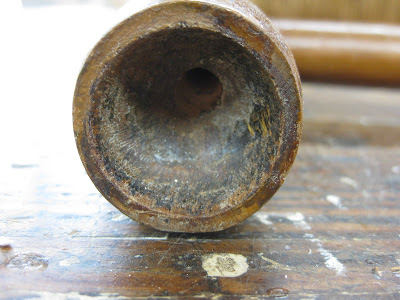
I have had an attraction to early cabinetmaker's tool chests since I started accumulating tools about thirty years ago. The one in the opening photograph is my favorite and most decorated, adorned with elaborate inlays and exotic woods. This chest was advertised in the local newspaper. I purchased it from a retired minister who had bought it in Virginia in the mid-1960s. When he found it, it was full of the original tools. The minister told me that he did not have enough money to buy the chest and its contents, so he just bought the chest. It is a rare thing indeed to find an intact chest with its original complement of tools. Many tool dealers mine the chests for their tools and sell them off individually for a higher profit than could be had for the whole package.
Most joiners, cabinetmakers and carpenters in the eighteenth, nineteenth, and early twentieth centuries stored their tools in a chest like this. They were usually constructed during an apprenticeship and then filled with tools as the craftsman could afford them during his working life. The chests served several functions, most important being safe and secure storage. The chest was also an easy way to transport tools to either the jobsite or a new shop. I think that the chests also served as a resume of sorts, exhibiting the craftsman's skills to potential employers and clients.
When I was looking for a way to store my chairmaking tools, I decided to make a version of a cabinetmaker's tool chest, albeit smaller than the typical chest. My chairmaking tools are specialized and not generally used unless I am working on chairs. So it seemed logical to store these tools together, with the chest being moved out of the way when not in use. I occasionally take workshops and work away from the shop, so like the originals it travels well despite requiring two people to move it.

My chest is made of eastern white pine and mahogany with veneers and inlays of rosewood, mahogany, zebrawood, and ebony. Its painted with milk paint and I had the Federal eagle painted on the front by a local painter. In the shop it sits on a dolly and is easily rolled to where its needed.



























